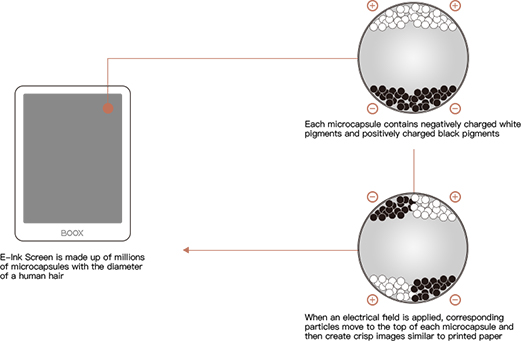E-Ink technology, often synonymous with electronic paper displays (EPDs), has revolutionized the way we interact with digital content. This innovative technology offers several advantages over traditional LCD and OLED displays, making it a preferred choice for various applications. From e-readers to signage, E-Ink displays provide customizable and energy-efficient solutions that cater to the evolving needs of consumers and businesses alike.
What is E-Ink Technology?
E-Ink, short for electronic ink, is a type of display technology that mimics the appearance of ink on paper. It works by using microcapsules containing charged pigment particles suspended in a clear fluid. These particles move up or down when an electric field is applied, creating images or text that remain on the screen without continuous power. This feature not only conserves energy but also provides excellent readability in direct sunlight, a significant advantage over backlit screens.

Customizability and Versatility
One of the standout features of E-Ink technology is its high degree of customizability. E-Ink displays can be designed in various sizes and shapes, making them suitable for a wide range of applications. From large-scale digital signage in retail stores to small, flexible displays in wearable devices, E-Ink can be tailored to meet specific needs. Additionally, the ability to update content remotely allows for real-time changes, which is particularly useful for applications like electronic shelf labels and dynamic advertisements.
Energy Efficiency
Energy efficiency is a hallmark of E-Ink technology. Unlike traditional displays that require a constant power supply to maintain an image, E-Ink displays consume power only when the image changes. This ultra-low power consumption makes E-Ink ideal for battery-powered devices such as e-readers, which can last for weeks on a single charge. The energy-efficient nature of E-Ink displays also aligns with sustainable practices, reducing the overall environmental impact of electronic devices.
Applications of E-Ink Technology
The versatility of E-Ink technology has led to its adoption in various fields. In the realm of e-readers, brands like Kindle and Kobo have set the standard for comfortable, long-duration reading experiences. E-Ink’s glare-free display and paper-like readability reduce eye strain, making it a preferred choice for avid readers.
In retail, E-Ink is used for electronic shelf labels (ESLs) that can be updated instantaneously, ensuring accurate pricing and product information. This not only improves operational efficiency but also enhances the shopping experience for customers. E-Ink technology is also making inroads into smartwatches, smartphones, and even large-scale public information displays.
The Future of E-Ink Technology
Looking ahead, the future of E-Ink technology is bright, with ongoing advancements aimed at improving color displays and refresh rates. Researchers are exploring new ways to integrate E-Ink with other technologies, such as flexible electronics and IoT devices, to expand its functionality further. As the demand for energy-efficient and sustainable display solutions grows, E-Ink technology is poised to play a crucial role in shaping the future of digital displays.
In conclusion, E-Ink technology offers a compelling combination of customizability and energy efficiency, making it an excellent choice for a wide range of applications. Its ability to provide clear, readable displays under various lighting conditions and its minimal power requirements set it apart from traditional display technologies. As innovations continue to emerge, E-Ink technology will undoubtedly remain at the forefront of the digital display revolution.

